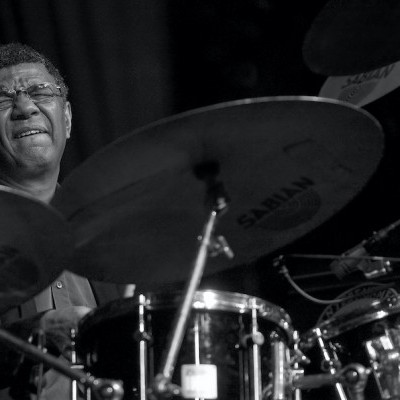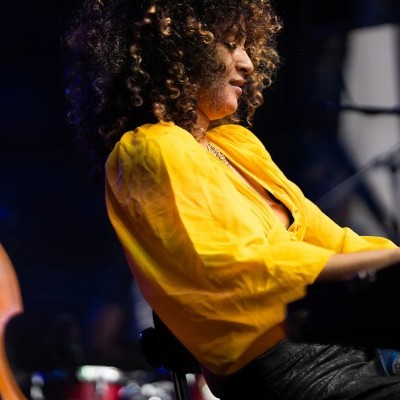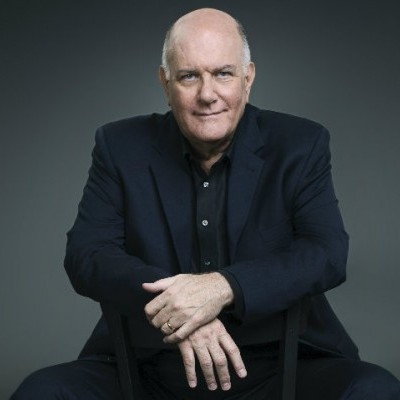Oct 28, 2025 10:47 AM
In Memoriam: Jack DeJohnette, 1942–2025
Jack DeJohnette, a bold and resourceful drummer and NEA Jazz Master who forged a unique vocabulary on the kit over his…
Long before Nina Simone told a Carnegie Hall audience in 1964 that she meant every word of “Mississippi Goddam,” artists had been engaging in activism, creating music that confronts. Decades after John Coltrane wrote “Alabama” and Marvin Gaye told an entire generation What’s Going On, contemporary performers are evolving the legacy of their activist predecessors. They’re following in the footsteps of those who civilly disobeyed before them, while updating their strategic operating systems to affect 21st-century change.
Saxophonist Roxy Coss can’t escape her own honesty—not on the bandstand and not off the stage. She plays phrases that form complete sentences to tell her story—a practice handed down to her from mentors Sherrie Maricle, Jeremy Pelt, Louis Hayes and Clark Terry: “You have to be honest,” Coss said. “‘This is what I have to say,’ because there’s no time for bullshit.”
Through her horn, Coss speaks out on issues of feminism and gender, engaging critics and allies alike. Similar to her predecessors, she draws inspiration from her own experiences—but also borrows from ideas born online, ideas that speak to her own generation of artists and listeners.
Her 2018 recording, The Future Is Female (Posi-Tone), features original compositions with titles pulled from online culture and social media: “Nevertheless, She Persisted,” “Nasty Women Grab Back,” “Feminist AF” and “#MeToo.” Coss, who recently issued Quintet (Outside In), views these phrases as meaningful both in regard to artistic expression and social engagement.
“So many people were feeling this,” she said, referencing emotional responses to the political climate around the 2016 election. “And we were left to process this—women and marginalized people. My compositions are always going to be reflecting whatever I’m personally processing at that time.”
In 2016, Coss’ personal processing gave way to nationwide organizing when she launched the Women in Jazz Organization. Beginning as a personal quest to connect with other women on the scene, the idea quickly developed into an inclusion-driven way to ensure that “women and non-binary people have equal opportunity to participate in and contribute to jazz, leading to an improved and more rich, diverse and successful art form,” according to the WIJO mission statement.
To date, the organization of more than 400 members boasts a thriving Facebook community, a mentorship program connecting established artists with emerging players and, now, a playlist.
“I thought, ‘How do we just get our music out there?’” Coss said. “Part of having the [WIJO membership] database in the first place is the idea that we’re like, ‘Hello! You keep saying that there aren’t women, but we are here. Here’s our music. It’s literally right here.’”
In October, WIJO launched themed playlists—swing and hot jazz among them—through Apple Music, in addition to hosting members’ music on its Soundcloud page.
AS COSS CONTINUES TO MINE online trends and culture to imbue her music with a message, another artist is finding ways of bridging the legacy of activism with her own updated concept of the protest song. On her forthcoming album ONA, slated for release in early 2020, singer Thana Alexa uses software to capture both pain and exhilaration—the singular voice of a people united, filtered through an iconic sound of resistance: the megaphone.
Using ProTools production software and the virtual synthesizer program Omnisphere, Alexa creates a haunting vocal effect reminiscent of a bullhorn and sets it atop waves of atmospheric synth pads: “There are different sounds that resonate with people,” said Alexa, who titled her record for the word “she” in Croatian as a celebration of women navigating their place in the modern world. “Some things are very literal, like the megaphone idea. You think of somebody with a megaphone shouting into a crowd of people, which reminds you of a [protest] march. There are these little musical elements that can invoke images in someone’s mind.”
Because she was learning Omnisphere on her own, Alexa would scroll through a vast library of sounds, clicking around until she found something that struck her. “Why choose certain sounds? When you hear something, it makes you feel something,” said Alexa, who recently performed during an ACLU Concert for Human Rights at ShapeShifter Lounge in Brooklyn. “Based on the feeling that I got [from hearing sounds in the library] and relating that to the tone of the song that I was putting them in, I would choose ‘yes’ or ‘no.’ It was a very intuitive process.”

Jack DeJohnette boasted a musical resume that was as long as it was fearsome.
Oct 28, 2025 10:47 AM
Jack DeJohnette, a bold and resourceful drummer and NEA Jazz Master who forged a unique vocabulary on the kit over his…

Always a sharp dresser, Farnsworth wears a pocket square given to him by trumpeter Art Farmer. “You need to look good if you want to hang around me,” Farmer told him.
Sep 23, 2025 11:12 AM
When he was 12 years old, the hard-swinging veteran drummer Joe Farnsworth had a fateful encounter with his idol Max…

D’Angelo achieved commercial and critical success experimenting with a fusion of jazz, funk, soul, R&B and hip-hop.
Oct 14, 2025 1:47 PM
D’Angelo, a Grammy-winning R&B and neo-soul singer, guitarist and pianist who exerted a profound influence on 21st…

Kandace Springs channeled Shirley Horn’s deliberate phrasing and sublime self-accompaniment during her set at this year’s Pittsburgh International Jazz Festival.
Sep 30, 2025 12:28 PM
Janis Burley, the Pittsburgh International Jazz Festival’s founder and artistic director, did not, as might be…

Jim McNeely’s singular body of work had a profound and lasting influence on many of today’s top jazz composers in the U.S. and in Europe.
Oct 7, 2025 3:40 PM
Pianist Jim McNeely, one of the most distinguished large ensemble jazz composers of his generation, died Sept. 26 at…